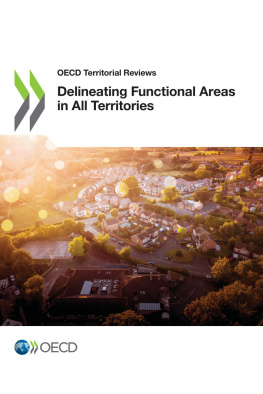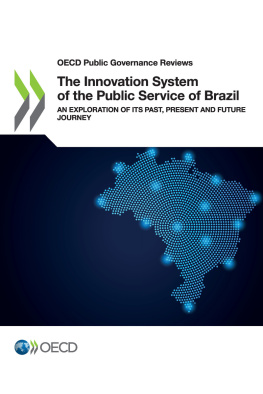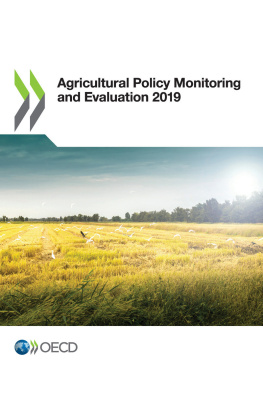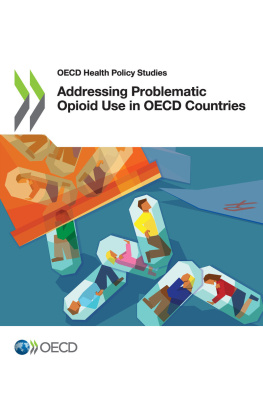OECD - Delineating Functional Areas in All Territories
Here you can read online OECD - Delineating Functional Areas in All Territories full text of the book (entire story) in english for free. Download pdf and epub, get meaning, cover and reviews about this ebook. year: 2020, publisher: OECD Publishing, genre: Politics. Description of the work, (preface) as well as reviews are available. Best literature library LitArk.com created for fans of good reading and offers a wide selection of genres:
Romance novel
Science fiction
Adventure
Detective
Science
History
Home and family
Prose
Art
Politics
Computer
Non-fiction
Religion
Business
Children
Humor
Choose a favorite category and find really read worthwhile books. Enjoy immersion in the world of imagination, feel the emotions of the characters or learn something new for yourself, make an fascinating discovery.
Delineating Functional Areas in All Territories: summary, description and annotation
We offer to read an annotation, description, summary or preface (depends on what the author of the book "Delineating Functional Areas in All Territories" wrote himself). If you haven't found the necessary information about the book — write in the comments, we will try to find it.
OECD: author's other books
Who wrote Delineating Functional Areas in All Territories? Find out the surname, the name of the author of the book and a list of all author's works by series.
Delineating Functional Areas in All Territories — read online for free the complete book (whole text) full work
Below is the text of the book, divided by pages. System saving the place of the last page read, allows you to conveniently read the book "Delineating Functional Areas in All Territories" online for free, without having to search again every time where you left off. Put a bookmark, and you can go to the page where you finished reading at any time.
Font size:
Interval:
Bookmark:
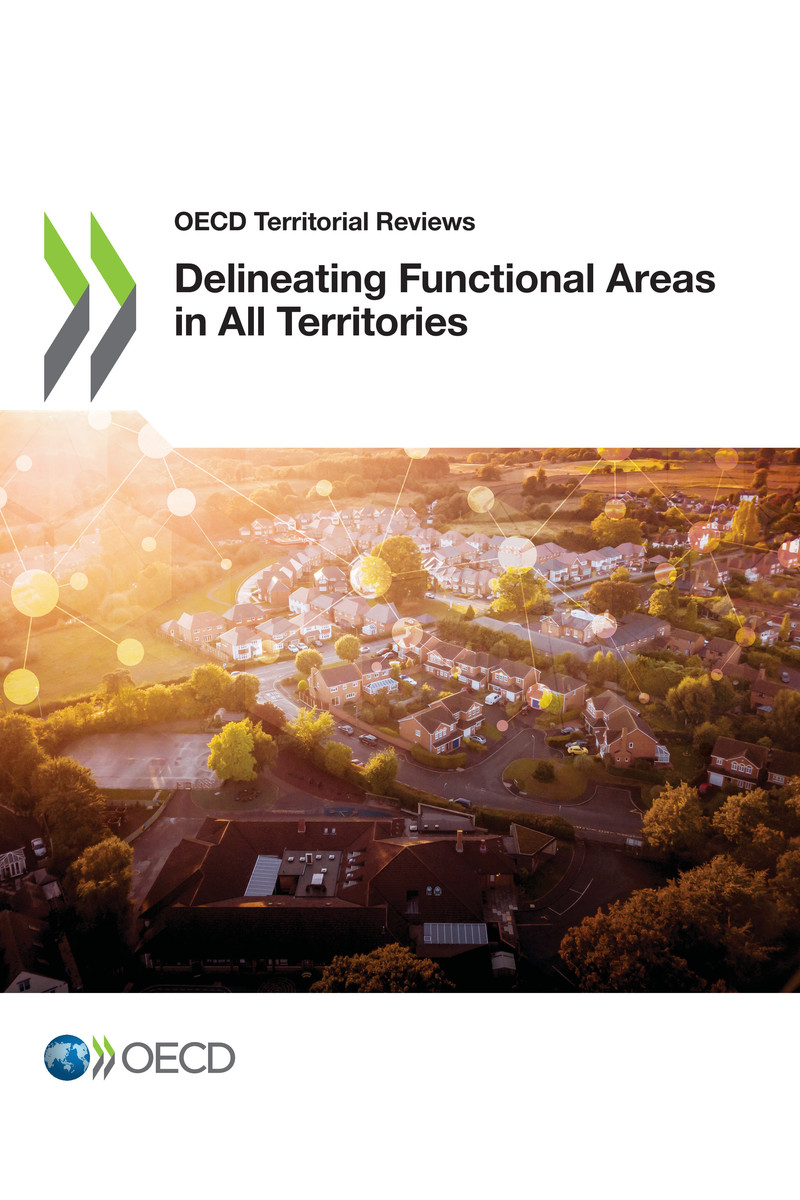
OECD (2020), Delineating Functional Areas in All Territories , OECD Territorial Reviews, OECD Publishing, Paris, https://doi.org/10.1787/07970966-en .
Amid heightened attention on growing geographic inequality, various OECD member countries have re-oriented their regional development policies towards a place-based approach to foster spatially inclusive economic development. In supporting this objective, the OECD Regional Development Policy Committee (RDPC) has highlighted the need for timely, accurate and informative territorial indicators in order to both design and monitor policies. Effective regional development policy not only requires subnational indicators for different territorial units such as regions, cities or rural areas, but also entails the recognition of economic linkages that exist between different territories. In particular, local labour markets extend beyond administrative borders and create functional linkages across areas. With respect to a functional definition of space, most OECD countries have focused their work on larger cities and their surrounding area of economic influence by establishing the concept of functional urban areas. However, functional areas such as integrated local labour markets exist across a countrys entire national territory. Extending this concept to non-urban areas can help policy makers analyse subnational developments and design spatial policies that are better targeted to intermediate and rural areas.
Functional Areas for All Territories provides a comprehensive review of existing approaches to delineating functional areas across countries entire national territory as a tool for territorial statistics and regional policy making. The report outlines the rationale and value added for functional territories as a complement to established administrative geographies. It explains and discusses the most important challenges and methodological aspects of delineating functional areas based on travel-to-work commuting flows or novel sources of data. Finally, the report develops a set of methodological guidelines for identifying functional areas. In applying these guidelines in five OECD countries, the report demonstrates the feasibility of delineating functional areas across diverse types of country geographies in a consistent manner.
This report contributes to the work programme of the OECD on regional development and territorial statistics. It was approved by the Working Party on Territorial Indicators (WPTI) and the RDPC on 9 November 2019.
This report was produced by the OECD Centre for Entrepreneurship, SMEs, Regions and Cities (CFE), led by Lamia Kamal-Chaoui, Director, as part of the programme of work of the Regional Development Policy Committee (RDPC). The review was made possible by financial support from Statistics Canada.
The OECD would like to thank the members of the projects scientific committee for their valuable comments, feedback and guidance throughout the project: Alessandro Alasia and Peter Murphy (both Statistics Canada), Luisa Franconi (Istat), Valeriya Angelova and Teodora Brandmueller (both Eurostat), Ksenia Shadrina (US Economic Development Administration) and Siiri Silm (University of Tartu).
Alessandro Alasia, Anne Munro and Peter Murphy (Statistics Canada) provided extensive feedback on an earlier draft of the report and pursued the mapping exercise based on Python in Canada and the United States. Luisa Franconi made detailed comments and provided important advice on both the methodological guidelines as well as the experience of Eurostat and Istat with functional areas. Siiri Silm generously shared the aggregated mobile phone flow data and helped draft the parts on the Estonian experience by using novel data to identify territorial linkages. Julia Schmitt-Schulte (Statistics Netherlands) provided input and data for cross-border functional areas in Europe. Finally, the OECD thanks Professor Mike Coombes for providing substantive feedback and offering detailed comments on the report.
The report was prepared by Lukas Kleine-Rueschkamp (Chapters 1, 2, 3, 4, and 6) and Milenko Fadic (Chapters 4 and 5). It was co-ordinated by Lukas Kleine-Rueschkamp and Paolo Veneri, and overseen by Rudiger Ahrend, Head of the Economic Analysis, Statistics and Multi-Level Governance Section. Pilar Philip prepared the review for publication.
Effective policy design requires sound statistical evidence on socioeconomic trends. For regional policy makers, such evidence needs to reveal information on differences in socioeconomic outcomes across space. Therefore, having granular data and indicators on relevant geographies is of paramount importance to regional policy. In order to design, implement and monitor effective regional development policy, it is crucial that such policy addresses the right geographic scale.
National statistical offices (NSOs) need to produce statistical indicators at a spatial detail that captures the socioeconomic geography of countries as well as being useful to policy makers. Most of the subnational geographies used by NSOs to collect and/or publish statistical indicators correspond to the units of the administrative organisation of countries, such as regions, provinces or municipalities.
However, such administrative geographies are not always the most appropriate or suitable scale to inform policy makers, nor are they able to capture how socioeconomic trends differ across space. This creates a common challenge for policy makers and statistical institutes alike. Both types of actors rely on statistical information based on administrative geographic units, even though peoples everyday lives and economic realities do not exclusively take place within such administrative units. Instead, economic linkages often connect people from different municipalities, towns or regions.
Policy makers need to look at the economic organisation of the territory to pursue policies at the right scale, especially when it comes to issues such as service provision or international comparability. Therefore, functional areas can complement administrative areas as a unit of analysis or the target of policy making. In recognising the importance of economic linkages, policy makers also need to realise that economic and social realities, which might once have been the rationale for establishing an existing administrative structure, change over time and thus territorial linkages between different areas might evolve.
Font size:
Interval:
Bookmark:
Similar books «Delineating Functional Areas in All Territories»
Look at similar books to Delineating Functional Areas in All Territories. We have selected literature similar in name and meaning in the hope of providing readers with more options to find new, interesting, not yet read works.
Discussion, reviews of the book Delineating Functional Areas in All Territories and just readers' own opinions. Leave your comments, write what you think about the work, its meaning or the main characters. Specify what exactly you liked and what you didn't like, and why you think so.

